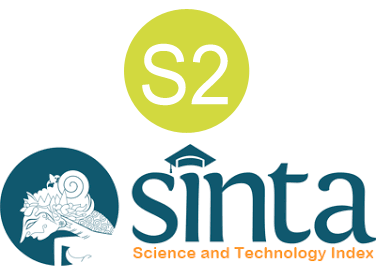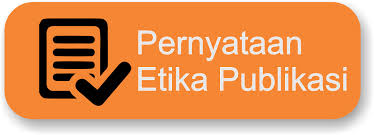Pengembangan Gerak Dan Lagu Anak Berbasis Tri Kaya Parisudha Sebagai Media Pengenalan Karakter Hindu Pada Anak Usia Dini
DOI:
https://doi.org/10.37329/jpah.v9i2.3761Keywords:
Gerak dan Lagu Anak, Tri Kaya Parisuda, Media pembelajaran, Agama Hindu, Anak Usia DiniAbstract
Children’s movement and song activities are a form of play that have always been an integral part of learning in early childhood education. In early childhood education institutions and kindergartens with a Hindu nuance, religious education often employs audiovisual media that feature movements and songs based on themes derived from Hindu teachings. One of the most frequently introduced themes is the concept of Tri Kaya Parisudha due to its relevance to the daily behaviors of children. The objective of this study is to develop Hindu-themed movements and songs centered on the Tri Kaya Parisuda concept. The research method used is Research and Development (R&D). The development process followed the ADDIE model. Children aged 5–6 years from Tunas Wangi Hindu State Kindergarten in Bone Village were selected as the study sample. Data from expert validation and field validation of the product were analyzed using both qualitative and quantitative methods. Qualitative analysis employed the Content Validity Ratio (CVR) formula by Lawshe. The developed movement and song successfully reflected the values of the Tri Kaya Parisudha concept. All validators agreed that the movements and songs used are appropriate and relevant to Hindu character values, as evidenced by a CVR score of 1.0 for this aspect. This indicates that this learning media is highly essential for introducing Hindu character concepts to early childhood learners.
References
Amineh, J. R., & Asl, D. H. (2015). Review of Constructivism and Social Constructivism. Journal of Social Sciences, Literature and Languages, 1(1), 9-16.
Ardiawan, K. N., & Padmadewi, L. (2020). Strategi Pola Asuh Berpendekatan Tri Kaya Parisudha Sebagai Suatu Layanan Bimbingan Siswa Sekolah Dasar. Widyacarya: Jurnal Pendidikan, Agama dan Budaya, 3(2), 80-84.
Artawan, K. N., & Ardiawan, I. K. N. (2018). Pembelajaran Quantum Teaching Berbasis Tri Kaya Parisudha. Jurnal Pendidikan Dan Pembelajaran, 3(2), 201-212.
Cahyaningrum, E. S., Sudaryanti, S., & Purwanto, N. A. (2017). Pengembangan Nilai-Nilai Karakter Anak Usia Dini Melalui Pembiasaan Dan Keteladanan. Jurnal Pendidikan Anak, 6(2), 203-213.
Campbell, P. S., & Scott-Kassner, C. (2018). Music in Childhood Enhanced: From Preschool through the Elementary Grades, Spiral bound Version. Cengage Learning.
Devianti, R., Sari, S. L., & Bangsawan, I. (2020). Pendidikan Karakter untuk Anak Usia Dini. MITRA ASH-SHIBYAN: Jurnal Pendidikan Dan Konseling, 3(2), 67-78.
Ernawati, M., & Tarigan, E. (2022). Lagu Anak Sebagai Media Dalam Penanaman Karakter Anak Usia Dini. Jurnal Pendidikan Dewantara, 1(1), 2963-0851.
Gardner, H. (2001). The Theory Of Multiple Intelligences. Early professional Development for Teachers, 1, 133-141.
Ibda, F. (2023). Perkembangan Moral Dalam Pandangan Lawrence Kohlberg. Intelektualita, 12(1).
Khaironi, M., & Ramdhani, S. (2017). Pendidikan Karakter Anak Usia Dini. Jurnal Golden Age, 1(2), 82-89.
Laksmi, N. A., & Maduria, T. P. (2021). Implementasi Ajaran Tri Kaya Parisudha Pada Sisya Di Pratama Widya Pasraman Kumara Siddhi Ngawen Gunung Kidul. Jawa Dwipa, 2(2), 136-146.
Maharintan, B., Khoiriyati, S., & Indri, D. M. B. (2021). Pengaruh Gerak Dan Lagu Terhadap Peningkatan Kreativitas Anak Usia Dini Kelompok A-1 Di Ra Perwanida Bendungan Jati Pacet Mojokerto. AULADA: Jurnal Pendidikan Dan Perkembangan Anak, 3(2), 210-221.
Mertayasa, I. W. (2019). Lagu Keagamaan Hindu Dalam Pembentukan Karakter Siswa Paud Hindu Amertha Yulia Ganesha Kabupaten Karangasem. PRATAMA WIDYA: Jurnal Pendidikan Anak Usia Dini, 3(2).
Nata, I. G. H., & Sujana, I. W. (2020). Efektivitas Model Project Based Learning Berbasis Tri Kaya Parisudha dalam Meningkatkan Kompetensi Pengetahuan IPS. Thinking Skills and Creativity Journal, 3(2), 91-98.
Payne, H. (2013). Dance Movement Therapy. London: Routledge.
Puspa, W. N. P. A. D., Dewi, N. W. S., & Hartaka, I. M. (2022). Implementasi Tantangan Ajaran Tri Kaya Parisudha Di Era Digital. VIDYA DARŚAN: Jurnal Mahasiswa Filsafat Hindu, 4(1), 12-20.
Rahayu, H., Yetti, E., & Supriyati, Y. (2020). Meningkatkan Kreativitas Anak Usia Dini melalui Pembelajaran Gerak dan Lagu. Jurnal Obsesi: Jurnal Pendidikan Anak Usia Dini, 5(1), 832-840.
Pratiwi, N. K. S. P. (2018). Pentingnya Peran Orang Tua Dalam Pendidikan Karakter Anak Usia Sekolah Dasar. ADI WIDYA: Jurnal Pendidikan Dasar, 3(1), 83-90.
Sudjono, E. T. K., & Kusumastuti, E. (2017). Proses Pembelajaran Gerak Dan Lagu Yang Kreatif Berdasarkan Kurikulum 2013 Di Tk Miryam Semarang. Jurnal Seni Tari, 6(2), 1-9.
Sudarsana, K., Suwindia, I. G., & Gata, I. W. (2022). Implementasi Metode Pembelajaran Belajar Sambil Bernyanyi Dalam Menumbuhkembangkan Pendidikan Karakter Anak Di Paud Hindu Dama Kumara Desa Patemon Kabupaten Buleleng (Kajian EtnopedagogI). Maha Widya Bhuwana: Jurnal Pendidikan, Agama dan Budaya, 5(2), 179-188.
Widjanarko, P. (2016). Pendidikan Seni Bermain Dan Bernyanyi Anak Usia Dini. Jurnal AUDI, 1(1), 25-31.
Widjanarko, P. (2019). Penanaman Karakter Melalui Lagu-Lagu Nasional Di Paud Pelita Harapan Bangsa Kota Tegal. PAUDIA: Jurnal Penelitian Dalam Bidang Pendidikan Anak Usia Dini, 8(2).
Downloads
Published
How to Cite
Issue
Section
License
Copyright (c) 2025 Praptika Kamalia Jaya, Marsono Marsono, Ida Bagus Komang Sindu Putra, I Komang Suardika, Putu Ayu Septiari Dewi, Ni Wayan Gita Chandra Suari

This work is licensed under a Creative Commons Attribution-ShareAlike 4.0 International License.
An author who publishes in the Jurnal Penelitian Agama Hindu agrees to the following terms:
- Author retains the copyright and grants the journal the right of first publication of the work simultaneously licensed under the Creative Commons Attribution-ShareAlike 4.0 License that allows others to share the work with an acknowledgement of the work's authorship and initial publication in this journal
- Author is able to enter into separate, additional contractual arrangements for the non-exclusive distribution of the journal's published version of the work (e.g., post it to an institutional repository or publish it in a book) with the acknowledgement of its initial publication in this journal.
- Author is permitted and encouraged to post his/her work online (e.g., in institutional repositories or on their website) prior to and during the submission process, as it can lead to productive exchanges, as well as earlier and greater citation of the published work (See The Effect of Open Access).
Read more about the Creative Commons Attribution-ShareAlike 4.0 Licence here: https://creativecommons.org/licenses/by-sa/4.0/.








